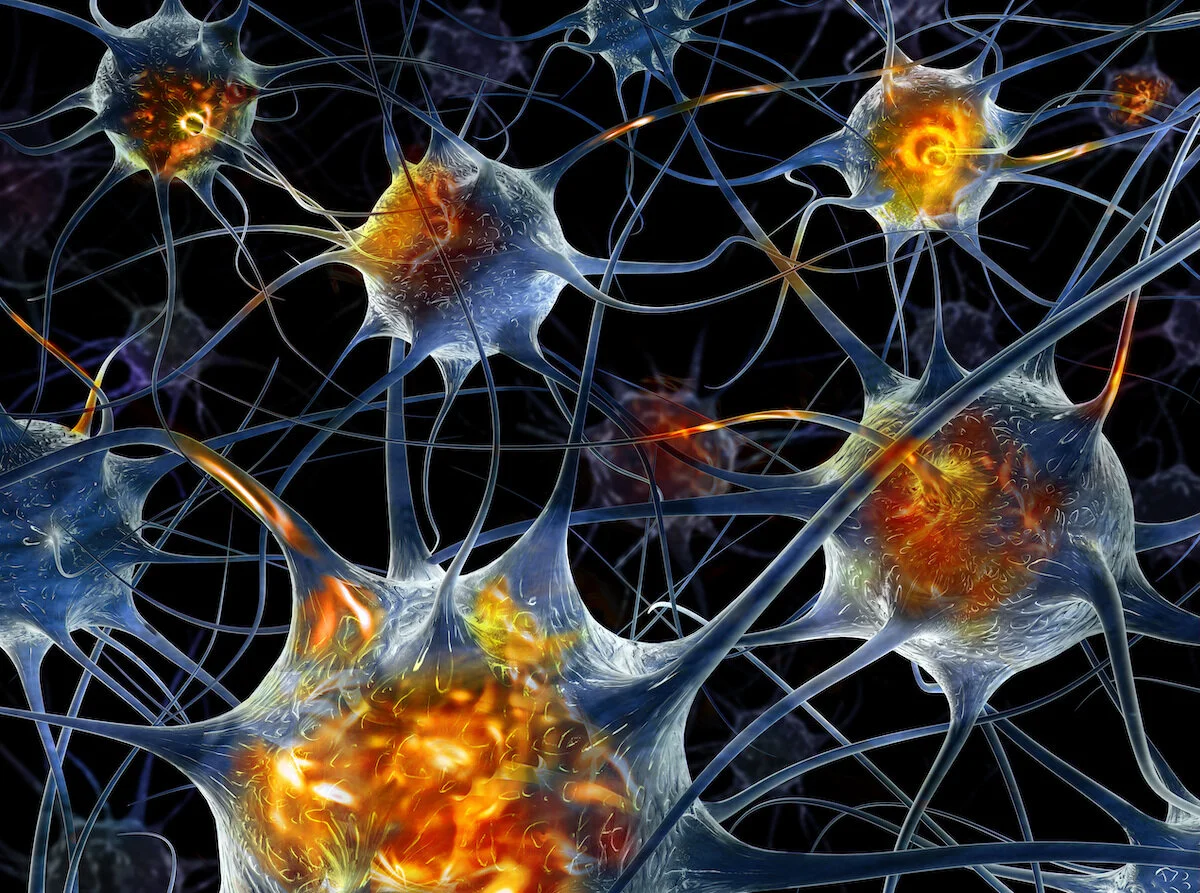Image and caption information courtesy of the California Institute for Regenerative Medicine. Anirvan Ghosh lab, University of California, San Diego, via CIRM
“In 1959 Pedro Bach-y-Rita had a stoke that paralyzed his face and half of his body and left him unable to speak. Ninety-seven percent of the nerves that run from the cerebral cortex to the spine were destroyed. (His son) George brought his paralyzed father back to Mexico to live with him. “I decided that instead of teaching my father to walk, I was going to teach him first to crawl.” The crawling went on for months. At the end of a year his recovery was complete enough for Pedro, to start full-time teaching again at City College in New York. His brain had totally reorganized itself with the work he did with George.”
Neurons: nerve cells located in the brain. Composed of a “cell body,” an “axon,” and “dendrites.” At birth, the typical (human) brain contains over (eighty-six) billion neurons, whose number slowly diminishes with age. (Ramachandran, 8) Neurons are the largest cells in the body. (Fields, 21)
A typical neuron in the “cortex” receives (signals) from 10,000 other neurons. (Discover, Aug. 2007, 56) The total number of connections between neurons in your (brain) is around 0.2 quadrillion. (They) are densely connected to one another in intricate, forest-like networks. Connections between neurons ceaselessly blossom, die, and reconfigure. (Eagleman, 7) Neurons are not islands in the brain. Instead their forking branches are tightly entangled with each other. (Cerebrum2009, 69) Despite their demanding requirements for “oxygen” and “glucose,” neurons are not in direct physical contact with cerebral “capillaries.” They rely on “astrocytes” to keep them alive. (Fields, 173) Each neuron is biochemically distinct and can be affected by distinct disease states. (Kandel, 67) Traditionally classified by “morphology,” (now) classified by their genetic makeup, and also by the which “neurotransmitter” they release. (Campbell, BSP210) A key principle of neuronal architecture is that nearby neurons “encode” similar information. Neurons that need to be connected for functional reasons are normally next to each other. (Koch, 81) Also referred to as ‘cell' and ‘brain cell.’
Neuron Doctrine: Wilhelm Waldeyer, in 1891 published a paper in which he suggested that brain cells be called “neurons.” In this paper, he also coined the phrase ‘the neuron doctrine’ to account for the application of the “cell theory” to the brain. (LeDoux, 37)
Plasticity: how the brain is physically changed through learning. (Tallal, 30Oct2012) The ability of neurons to be altered by experience. (LeDoux, 137) The brain is 'plastic,' subject to correction and re-strengthening. (Merzenich, 109) The American psychologist William James (coined) the term ‘plasticity.’ A plastic object is one that can be shaped and it can hold that shape. Whether intentionally or not, ‘plasticity’ suggests that the key idea is to mold something once and keep it that way forever: to shape the plastic toy and never change it again. But that’s not what the brain does. (The brain) carries on remolding itself throughout you life. (Eagleman, 13) The process of generating new connections between brain cells and strengthening existing connections, of creating new “neural pathways” in the brain. While some parts of the brain, such as the “cerebral cortex,” may have more plastic potential because there are more neurons and connections to be altered, even areas (outside the cortex) display plasticity. It is a property of all brain tissue. (Doidge, 97) Except for a few well-defined sensitive periods for certain types of vision, hearing, and first-language learning, the brain is capable of growth well beyond the first few years of life. An important part of the growth is happening just before puberty and well into adolescence. (Spinks) The experiences… of a person are always reflected in the brain’s structure. If an accountant drops her career to become a pianist, the neural territory devoted to her fingers will expand; if she becomes a microscopist, her “visual cortex” will develop higher resolution for the small details she seeks; if she becomes a perfumer, her brain regions assigned to smell will enlarge. (Eagleman, 11) Adjective - ‘plastic.’ Also referred to as ‘neuroplasticity,’ ‘brain plasticity,’ ‘synaptic plasticity,’ and 'plastic brain change.'
